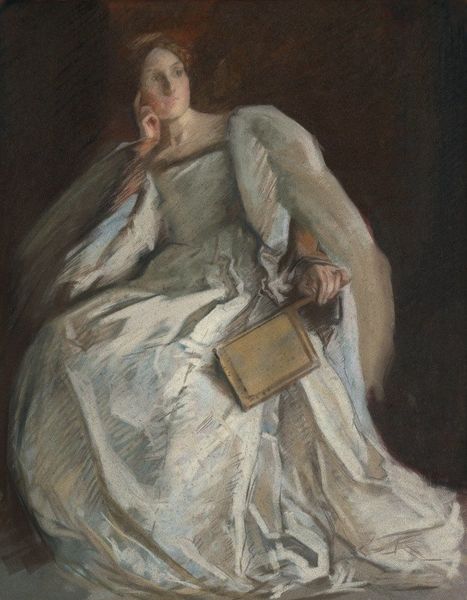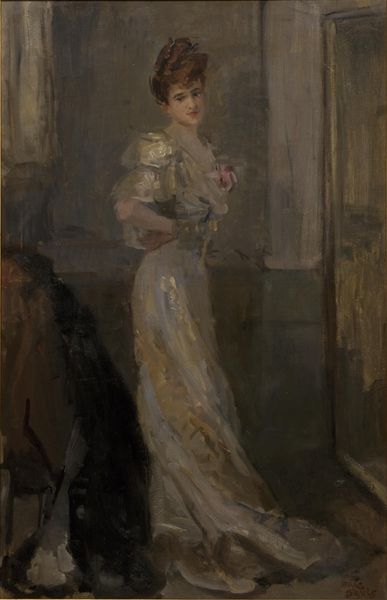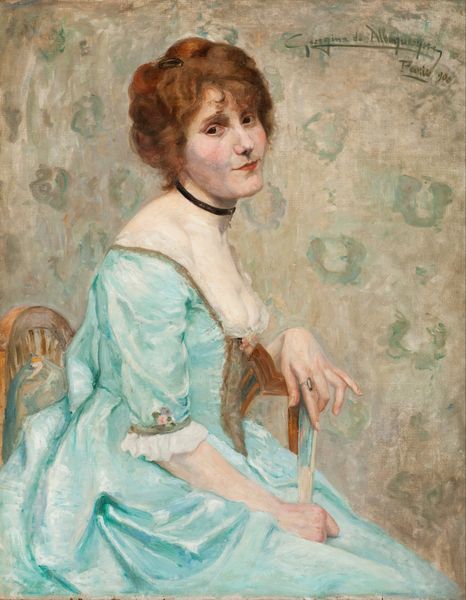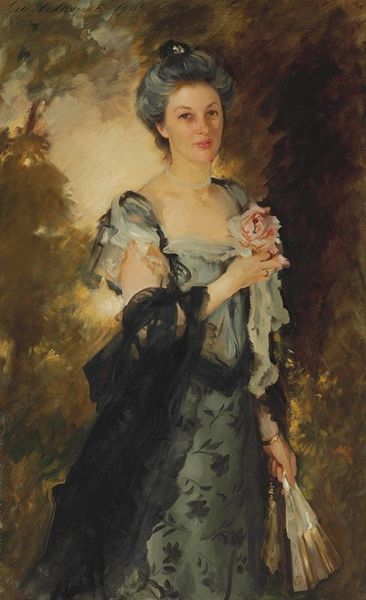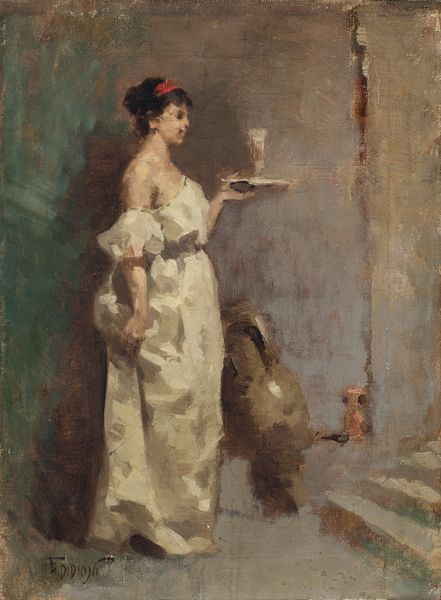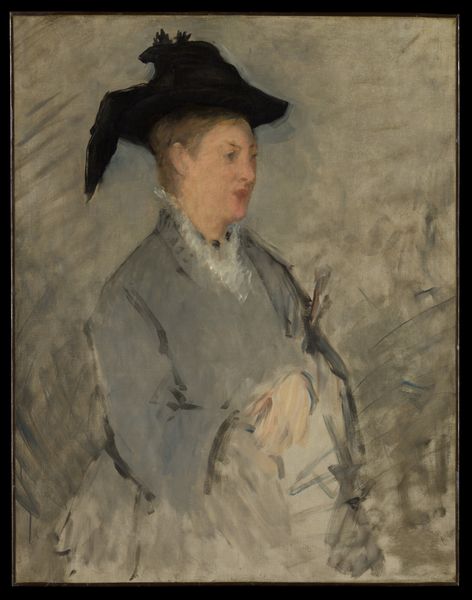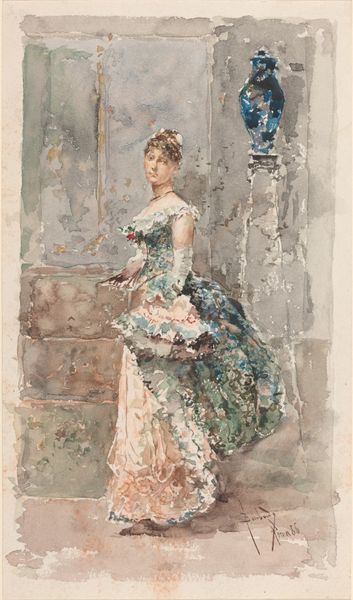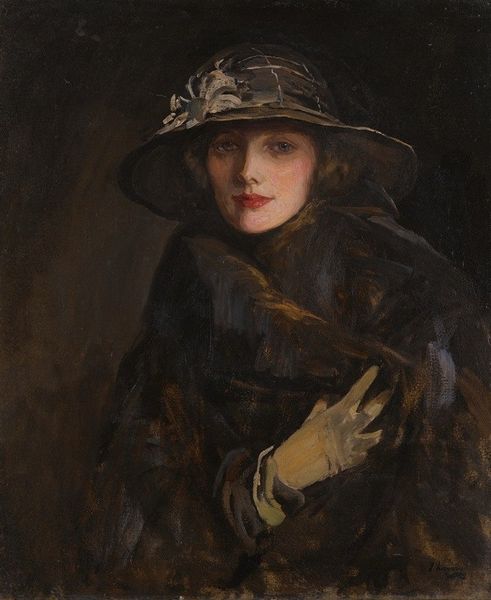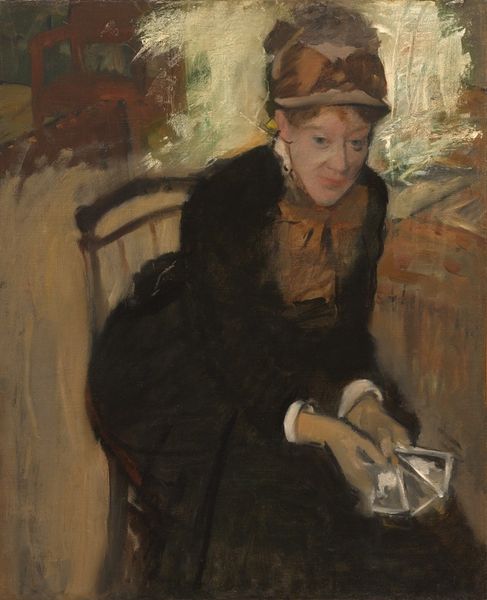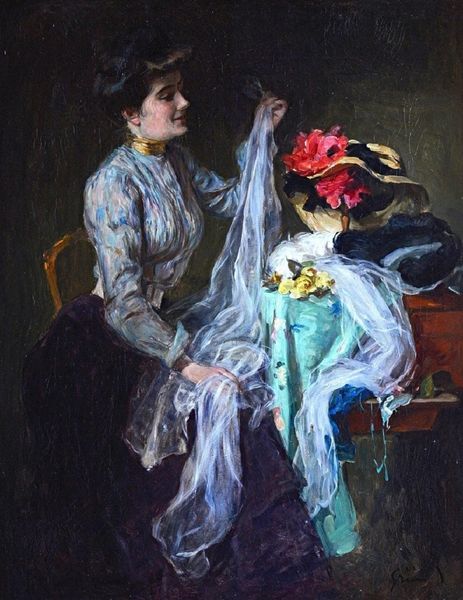
Dimensions: 121 cm (height) x 93 cm (width) (Netto), 132 cm (height) x 104 cm (width) (Brutto)
Editor: This is Laurits Tuxen's "The Artist's Daughter in Fancy Dress," painted in 1916 using oil on canvas. I'm struck by how the costume, while ostensibly playful, has a slightly unsettling quality. What’s your perspective on this painting? Curator: The painting offers a fascinating lens into the societal role of portraiture and the performative nature of identity within the context of early 20th-century European culture. Portraits were not merely about likeness; they were statements. The "fancy dress" suggests a theatrical presentation of self. Editor: How does this play out given the father-daughter relationship between the artist and sitter? Curator: Exactly! This context invites us to question whose vision we're seeing: Is it a playful expression of his daughter’s personality, or a constructed image meant for public consumption and shaped by Tuxen's vision of femininity and social standing? Think about the impact of class – would the depiction be different if this was a different class of people? Editor: So, it's a private moment presented with public expectations? Curator: Precisely. The choice of the costume becomes significant. It might reflect a desire to portray her in a way that's both individual and conforming to social ideals, which circulated through paintings displayed in museums like this one, creating and reflecting particular class values. The slightly unsettling feeling you mentioned may stem from the inherent tension in this constructed performance. Do you agree? Editor: I do. The act of choosing the dress, then painting, reveals a conscious act of image-making for that specific time, shaping future perception. It highlights the layered, conscious artifice inherent in portraiture. Curator: And that makes the painting quite compelling in unveiling the historical forces shaping personal expression.
Comments
No comments
Be the first to comment and join the conversation on the ultimate creative platform.
